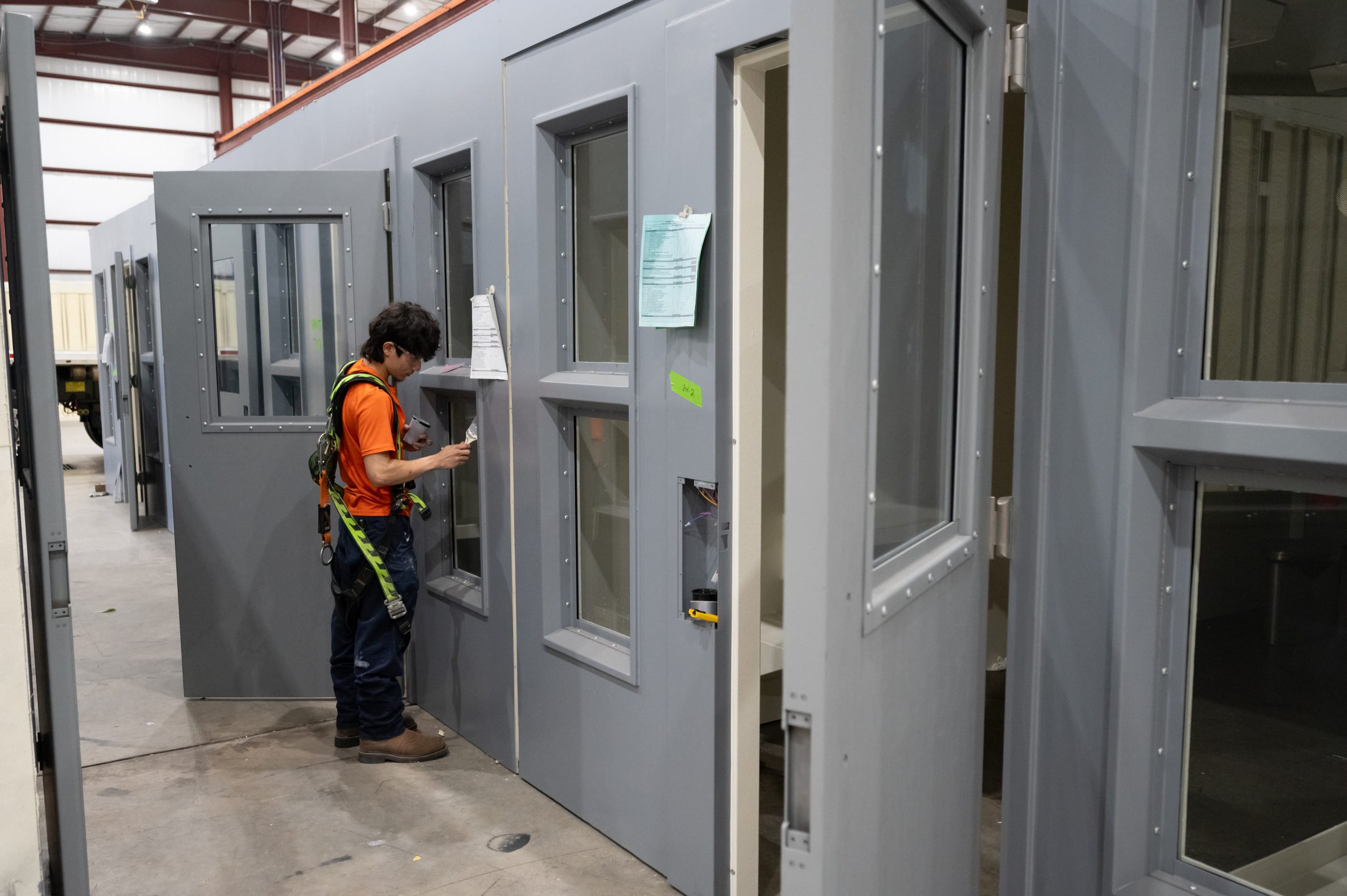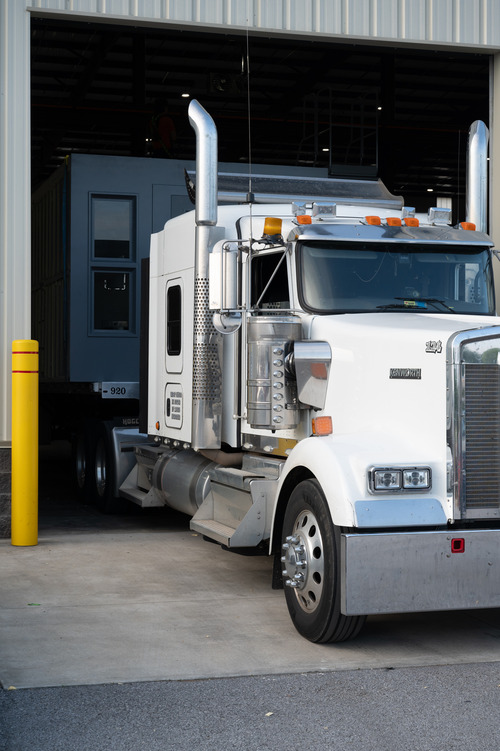Door Hinges for Prisons: Enhancing Security and Durability in Correctional Facilities
Door hinges in prisons play a vital role in maintaining security and order. These seemingly simple components are actually complex pieces of hardware designed to withstand extreme use and potential tampering. Prison door hinges must be durable, tamper-resistant, and able to support heavy doors while allowing smooth operation.
Selecting the right hinges for prison doors involves considering factors like material strength, corrosion resistance, and security features. Some hinges are designed with built-in alarms or special coatings to prevent inmates from using them as weapons. Proper installation and regular maintenance are key to ensuring these hinges function correctly and maintain the integrity of cell doors.
Recent innovations in prison door hinge technology have led to improved designs that enhance both security and ease of use for staff. These advancements aim to create a safer environment for both inmates and corrections officers while also improving cost-efficiency in prison operations.
Key Takeaways
- Prison door hinges must be strong, secure, and resistant to tampering.
- Regular maintenance is crucial for proper function of prison door hinges.
- New hinge designs aim to improve security and efficiency in correctional facilities.
Importance of Security in Prison Door Hinges
Door hinges play a crucial role in prison security. They must withstand tampering attempts and harsh conditions while maintaining their functionality. Let’s explore the key aspects of secure prison door hinges.
Tamper-Resistant Designs
Tamper-resistant hinges are essential for prison doors. These hinges use special designs to prevent inmates from removing or manipulating them. Many correctional facilities require hinges that can’t be easily disassembled or damaged.
Some tamper-resistant features include:
- Non-removable pins
- Concealed screws
- Interlocking leaves
These elements make it difficult for inmates to take the hinge apart. You’ll also find hinges with built-in alarms that alert staff to tampering attempts. This adds an extra layer of security to prison doors.
Material Strength and Durability
The materials used in prison door hinges are critical for security. You need hinges that can withstand constant use and potential abuse. High-security correctional settings often use hinges made from:
- Hardened steel
- Stainless steel
- Heavy-duty alloys
These materials resist cutting, grinding, and other forms of attack. They also stand up to harsh cleaning chemicals and frequent use. Durable hinges maintain proper door alignment, which is crucial for locking mechanisms to work correctly.
Look for hinges with corrosion-resistant finishes. This helps them last longer in humid prison environments. You should also consider hinges rated for fire resistance to meet safety codes.
Types of Door Hinges Used in Prisons
Prison door hinges need to be strong and secure. They must withstand heavy use and prevent tampering. The main types are continuous, mortise, and pivot hinges. Each has unique features for different security needs.
Continuous Hinges
Continuous hinges run the full length of the door. They offer better security and durability than other types. These hinges spread the door’s weight evenly, reducing stress on any single point.
You’ll find continuous hinges in many high-security areas of prisons. They’re hard to remove or tamper with. This makes them ideal for cells and other sensitive locations.
Some continuous hinges have built-in electrical wiring. This allows for electronic locking systems without exposed cables. The seamless design also prevents inmates from hiding contraband in hinge gaps.
Mortise Hinges
Mortise hinges fit into cutouts in the door and frame. They’re less visible than other types, improving the look of the door. These hinges are strong and can support heavy doors.
You’ll see mortise hinges used on many interior prison doors. They work well for offices, common areas, and medium-security zones.
Prison-grade mortise hinges often have special features. These may include:
- Non-removable pins
- Tamper-resistant screws
- Reinforced knuckles
These additions make the hinges more secure and harder to break.
Pivot Hinges
Pivot hinges allow doors to swing in both directions. They’re useful in high-traffic areas of prisons. You’ll often find them on doors between different sections or in cafeterias.
These hinges mount at the top and bottom of the door. This design spreads the door’s weight over a larger area. It makes pivot hinges very durable and able to handle frequent use.
Pivot hinges can include security features like:
- Concealed mounting plates
- Heavy-duty bearings
- Adjustable closing speeds
These hinges are harder to install but offer smooth operation for years.
Installation and Maintenance Procedures
Proper installation and upkeep of prison door hinges are crucial for security and functionality. These procedures ensure longevity and optimal performance in high-stress environments.
Installation Best Practices
When installing door hinges in prisons, use heavy-duty materials designed for correctional facilities. Choose hinges that meet security standards for detention centers. Align the hinge carefully with pre-drilled holes in the door frame.
Apply a thread-locking compound to screws before installation. This prevents loosening from frequent use and tampering attempts. Tighten all screws to the manufacturer’s torque specifications.
Test the door’s swing and alignment after installing hinges. Make adjustments as needed to ensure smooth operation. Apply lubricant to moving parts, following facility guidelines for approved products.
Routine Maintenance and Inspection
Inspect prison door hinges regularly, ideally every week. Look for signs of wear, damage, or tampering. Check that all screws remain tight and the hinge moves freely without squeaking.
Clean hinges with a dry cloth to remove dust and debris. Apply approved lubricants sparingly to maintain smooth operation. Avoid over-lubrication, which can attract dirt.
Test the locking mechanism associated with the door to ensure proper function. Replace any worn or damaged parts immediately. Keep detailed maintenance logs for each door hinge.
Address any issues promptly to maintain security. Train staff on basic hinge maintenance and how to spot potential problems.
Safety and Compliance Standards
Door hinges for prisons must meet strict safety and compliance standards. These standards ensure the security and durability of prison facilities while protecting both inmates and staff.
National and International Standards
The American Correctional Association sets guidelines for security hardware in detention facilities. These include specifications for door hinges and other components.
Some key requirements include:
- Hinges must withstand extreme force and tampering • Materials must be corrosion-resistant • Hardware should prevent unauthorized access
International standards also exist, such as those from the International Organization for Standardization (ISO). These provide global benchmarks for security equipment in correctional settings.
You’ll find that many standards focus on:
- Strength and durability testing • Fire resistance ratings • Anti-ligature design to prevent self-harm
Compliance Certifications for Suppliers
Suppliers of prison door hinges must obtain proper certifications. These ensure their products meet required safety and security standards.
Common certifications include:
- UL listings for fire resistance • ANSI/BHMA grades for durability • ADA compliance for accessibility
To get certified, suppliers undergo rigorous testing processes. Their hinges are subjected to stress tests, cycle tests, and security evaluations.
You should always verify a supplier’s certifications before purchasing. This helps ensure you’re getting products that meet legal requirements and safety standards for your facility.
Certified suppliers often provide detailed documentation. This includes test results and compliance reports for their door hinges.
Innovations in Prison Door Hinges
Prison door hinges have seen major upgrades in recent years. New designs improve security and monitoring while streamlining operations for staff. These advancements make prisons safer and more efficient.
Electromechanical Integration
Modern prison door hinges now incorporate electronic components. These allow for remote control and monitoring of door movements. You’ll find sensors that detect unauthorized openings or tampering attempts.
Some hinges have built-in alarms that trigger if a door is forced open. This alerts guards instantly to potential security breaches. The direct supervision model in correctional design benefits from these innovations.
Electromechanical hinges can also log all door activity. This creates a digital record of cell entries and exits. You can use this data to track inmate movements and staff patrols.
Smart Hinges and Surveillance
Smart hinges take security a step further. They integrate with prison surveillance systems. These hinges have tiny cameras built into them. This gives you a clear view of anyone entering or exiting a cell.
The footage is streamed to control rooms in real-time. Guards can monitor multiple doors at once. This improves overall prison safety and helps prevent incidents.
Some smart hinges use facial recognition technology. They can identify inmates and staff members as they pass through doorways. This adds an extra layer of access control and helps prevent unauthorized movement within the facility.
These advanced hinges also allow for remote unlocking in emergencies. You can quickly open multiple doors at once if needed for evacuations.



